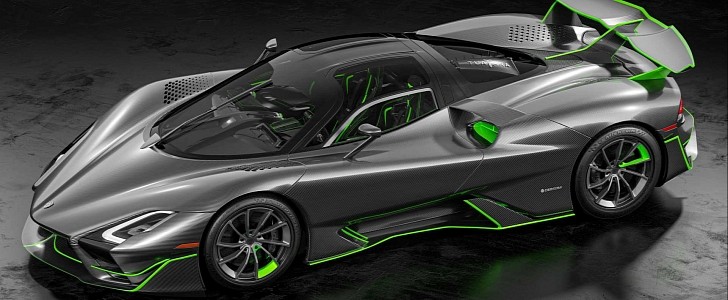Koenigsegg and Pagani stand out from the crowd for their attention to detail, bewitching looks, and ultra-luxury appointments in the world of boutique hypercars. Then we have SSC North America, the company responsible for a generic-looking hypercar with a questionable history.
Previewed in 2011 at the Pebble Beach Concours d’Elegance, the Tuatara and Shelby SuperCars Inc. became the laughing stock of the automotive world in October 2020 following a top-speed run. Challenged by independent analysts, the shady run was repeated in December when the car wasn’t capable of exceeding 252 mph (406 kph). January is when their hard work paid off with a two-way average top speed of 282.9 mph (455.3 kph).
Penned by Jason Castriota, the man who gave us the Ferrari 599 GTB Fiorano and Maserati GranTurismo, the Tuatara enters the 2022 model year with a couple of new options. Striker is the name of a road-going spec, while the Aggressor is a mysterious track-only variant. More to the point, mysterious as in no photographs or renders of it have been provided so far.
What makes the Striker better than the standard specification, you may be wondering? For starters, check out that body kit. SSC developed a high-downforce package topped by a fixed rear wing with a vertical stabilizer. Dive planes in the front splitter, vaned rocker panels, and a ginormous rear diffuser produce 1,100 pounds (500 kilograms) of downforce at 160 mph (257 kph), noticeably more than the standard 362 pounds (164 kilograms).
The crazy-looking Tuatara Striker puts 45.4 percent of the downforce on the front axle, according to the Richland, Washington-based company founded by Jerod Shelby in 1998. Castriota reportedly spent more than 1,000 hours in CFD to design the aerodynamic package, which is laudable but not exactly enough of an effort because CFD uses numerical analysis and data structures to simulate an automobile’s aerodynamics. In the real world, CFD may backfire in a spectacular fashion as we’ve often seen in Formula 1.
Under the hood, the Striker flaunts a twin-turbo V8 with E85 capability and 1,750 horsepower. Only the Aggressor can be taken to 2,200 horsepower if you pay extra for more boost, higher compression, and a more aggressive camshaft. Both versions rely on a CIMA seven-speed automated manual that can allegedly upshift or downshift in less than 100 milliseconds.
Penned by Jason Castriota, the man who gave us the Ferrari 599 GTB Fiorano and Maserati GranTurismo, the Tuatara enters the 2022 model year with a couple of new options. Striker is the name of a road-going spec, while the Aggressor is a mysterious track-only variant. More to the point, mysterious as in no photographs or renders of it have been provided so far.
What makes the Striker better than the standard specification, you may be wondering? For starters, check out that body kit. SSC developed a high-downforce package topped by a fixed rear wing with a vertical stabilizer. Dive planes in the front splitter, vaned rocker panels, and a ginormous rear diffuser produce 1,100 pounds (500 kilograms) of downforce at 160 mph (257 kph), noticeably more than the standard 362 pounds (164 kilograms).
The crazy-looking Tuatara Striker puts 45.4 percent of the downforce on the front axle, according to the Richland, Washington-based company founded by Jerod Shelby in 1998. Castriota reportedly spent more than 1,000 hours in CFD to design the aerodynamic package, which is laudable but not exactly enough of an effort because CFD uses numerical analysis and data structures to simulate an automobile’s aerodynamics. In the real world, CFD may backfire in a spectacular fashion as we’ve often seen in Formula 1.
Under the hood, the Striker flaunts a twin-turbo V8 with E85 capability and 1,750 horsepower. Only the Aggressor can be taken to 2,200 horsepower if you pay extra for more boost, higher compression, and a more aggressive camshaft. Both versions rely on a CIMA seven-speed automated manual that can allegedly upshift or downshift in less than 100 milliseconds.









